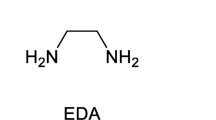Summary
The influence of twenty phosphorus-containing ligands on the CO insertion with four-coordinated Ni11 complexes as starting reagents is reported. Quantitative separation of the electronic and steric effects by a multilinear regression analysis (55% electronic and 45% steric influence) is presented together with a three dimensional representation. An increase in donor-capacity favours CO insertion and an increase in steric hindrance leads to a decrease in the fraction of the corresponding ketone.
Similar content being viewed by others
References
Organometallic Complex Compounds, Part 4: H. Schenkluhn, W. Scheldt, B. Weimann and M. Zähres,Angew. Chem. Int. Edit., 18, 401 (1979).
A detailed description of the preparation and characterisation of complex (1) is given in H. Schenkluhn,Dissertation Univ. Bochum (1971).
G. P. Chiusoli and F. Guerriere,Chem. Comm., 781 (1967);J. Organometal. Chem., 15, 209 (1973).
H. F. Klein, H. H. Karsch,Chem. Ber., 109, 2524 (1976); T. Saruyama, T. Yamamoto and A. Yamamoto,Bull. Chem. Soc. Jpn., 49, 546 (1976).
C. A. Tolman,Chem. Rev., 77, 313 (1977).
P. Heimbach, J. Kluth, H. Schenkluhn and B. Weimann,Angew. Chem. Int. Edit., 19, 569 (1980);19, 570 (1980).
F. Brille, J. Kluth and H. Schenkluhn,J. Mol. Catal., 5, 27 (1979).
For experimental support of the carbanion migration within the CO-insertion reaction (Mn-complexes) see: J. R. Mawby, F. Basolo, R. G. Pearson,J. Am. Chem. Soc., 86, 5043 (1964).
K. Noack, F. Calderazzo,J. Organometal. Chem., 10, 101 (1967).
For corresponding theoretical calculations see: H. Berke, R. Hoffmann,J. Am. Chem. Soc., 100, 7224 (1978); D. Saddei, H. J. Freund and G. Hohlneicher,J. Organometal. Chem., 186, 63 (1980).
P. Heimbach and H. Schenkluhn,Topics in Current Chem., 92, 45 (1980).
R. Berger,Dissertation, Universität Essen (GHS) (1980).
R. Berger, H. Schenkluhn, B. Pittel and M. Zähres,Transition Met. Chem., 6, 277 (1981).
seee.g. the discussion for olefin insertion in M-H-bonds for four and five-coordinated Pt-complexes in D. L. Thorn and R. Hoffmann,J. Am. Chem. Soc., 100, 2079 (1978).
G. Wilke, B. Bogdanovic and M. Kröner,Ann. Chem., 699, 1 (1966); R. A. Schunn,Inorg. Synth., 15, 5 (1974).
G. Wilke, B. Bogdanovic, P. Hardt, P. Heimbach, W. Keim, M. Kröner, W. Oberkirch, K. Tanaka, E. Steinrücke, D. Walter and H. Zimmermann,Angew. Chem. Int. Edit., 5, 151 (1966).
C. Krüger, J. C. Sekutowski, H. Berke and R. Hoffmann,Z. Naturforsch., 33b, 1110 (1978).
P. R. Bevington,Data Reduction and Error Analysis for the Physical Science, Mac Graw-Hill, N.Y. 1969, p. 187.
Author information
Authors and Affiliations
Rights and permissions
About this article
Cite this article
Berger, R., Schenkluhn, H. & Weimann, B. Organometallic complex compounds, part 51. Ligand property controlled CO-insertion in nickel complexes: Separation of electronic and steric effects. Transition Met Chem 6, 272–277 (1981). https://doi.org/10.1007/BF00620745
Received:
Revised:
Issue Date:
DOI: https://doi.org/10.1007/BF00620745




